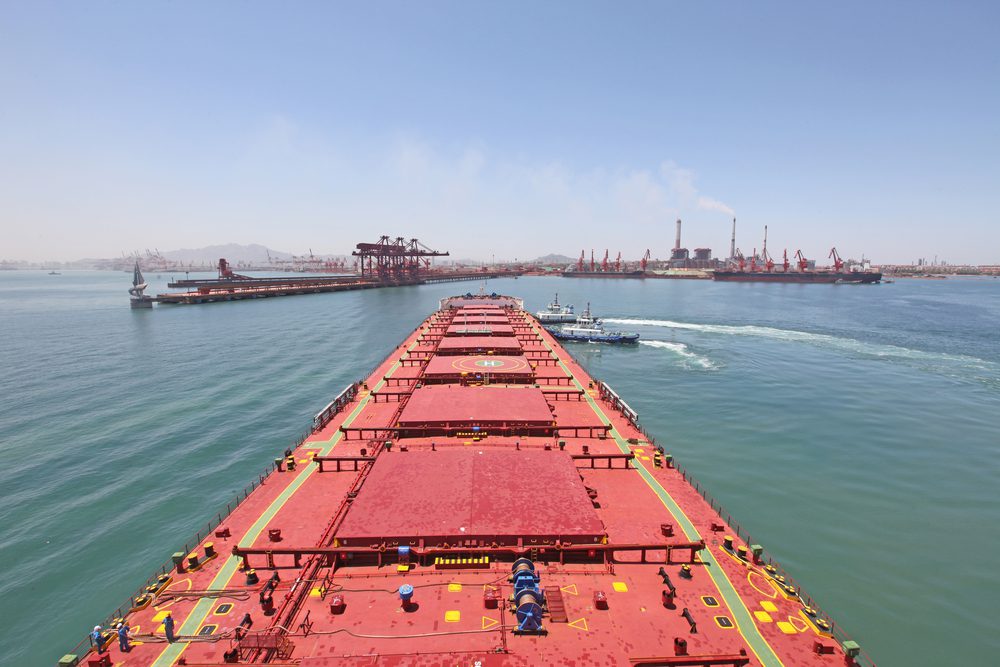Photo (c) Shutterstock/tcly
By Naomi Christie
(Bloomberg) — A measure of shipping costs for commodities collapsed to a record as China curbs coal buying at a time when a the largest-ever fleet is competing to haul cargoes.
The Baltic Dry Index, covering freight for everything from iron ore to grains, slid 0.5 percent to 553 points, according to data on Wednesday from the Baltic Exchange, a London-based publisher of rates on more than 50 trade routes. That was 1 point below the previous record in July and August, 1986.
China’s economy, which uses almost half the world’s coal and iron ore cargoes, will expand this year at the slowest pace since 1990, economists’ estimates compiled by Bloomberg show. Rates declined for all except one of the ship types tracked by the Baltic Exchange. The capacity of the global fleet of dry- bulk ships expanded 60 percent in the past five years, according to IHS Maritime data compiled by Bloomberg.
“Too many vessels were ordered,” said Jeffrey Landsberg, the managing director of Commodore Research, a New York-based adviser to ship owners. “But as we saw last year and extending into this year, Chinese coal imports are nowhere near the level that was expected.”
China’s coal-cargo imports fell 10 percent to 238.8 million metric tons in 2014, having risen 16 percent a year earlier, according to Clarkson Plc, the world’s largest shipbroker. Owners increased orders for new ships in 2013 in anticipation of that year’s demand growth persisting, according to Landsberg.
Record Fleet
The capacity of the global dry bulk fleet is the biggest ever, at 761 million deadweight tons, according to Clarkson.
All except one of the vessel classes tracked by the Baltic Exchange declined on Wednesday. Capesizes fell 1.2 percent to $5,731 a day while Handysizes, the smallest monitored, slid 2.7 percent to $4,237. The only size to gain was Panamaxes, the biggest to navigate the Panama Canal. Rates for those climbed 5.2 percent.
The way the Baltic Dry Index is calculated has changed over time, meaning it’s incorrect to compare the current level with prior years, Frode Moerkedal, an Oslo-based analyst at RS Platou Markets AS, wrote in a report e-mailed Feb. 10. Using the current method, the 1986 full-year average would have been 433 points, according to Moerkedal’s calculations.
While the current decline in shipping rates means they are unlikely to fall much further, it’s possible freight costs could extend their decline should Chinese steel production slow, said Erik Nikolai Stavseth, an analyst at Arctic Securities ASA in Oslo. The nation’s mills buy about two thirds of the world’s iron ore cargoes.
“It’s the worst ever, but there’s very limited downside from here,” Stavseth said by phone Wednesday. “You do have massive uncertainty on China and the pace at which they’re moving forward. If steel production in China peaks then dry bulk is in for a tough time.”
–With assistance from Grant Smith in London.
Copyright 2015 Bloomberg.

 Join The Club
Join The Club











